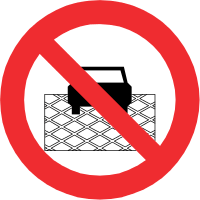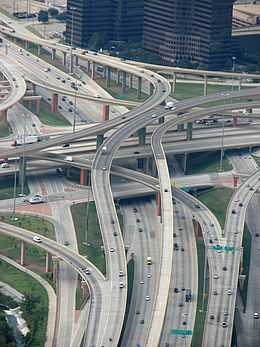Box junction

A box junction is a road traffic control measure designed to prevent congestion and gridlock at junctions. The surface of the junction is typically marked with a criss-cross grid of diagonal painted lines (or only two lines crossing each other in the box), and vehicles may not enter the area so marked unless their exit from the junction is clear (or, if turning, to await a gap in the oncoming traffic flow).
Box junctions were introduced in UK during 1967, following a successful trial in London.[1] In both Ireland and the United Kingdom (where cars drive on the left), drivers may enter the box and wait when they want to turn right and are stopped from doing so only by oncoming traffic or by other vehicles waiting to turn right.[2]
Similar yellow boxes may be painted on other areas of roadway which must be kept free of queuing traffic, such as exits from emergency vehicle depots or level crossings.
Box junctions are most widely used in many European countries such as Cyprus, Ireland, Malta, Portugal, Serbia and the United Kingdom; in parts of the United States such as New York and Colorado; and other countries, including Canada, Hong Kong, Singapore, Malaysia, South Africa, Taiwan, and Brazil.
Unmarked equivalents

In Australia, New Zealand and the European Union (excluding Ireland and the United Kingdom), road rules state that every intersection is a box: that is, you may not enter any intersection unless there is clear space on the other side, whether it is marked or not. In the EU this also applies to junctions with a minor road within the waiting area of a traffic light on the major road. This is generally respected, but the diagonal grid is still painted on some congested intersections to remind drivers of the rule and on level crossings where blocking the intersection could cause an accident. The same rule applies at every intersection in Russia.[3]
In many U.S. states, laws intending to decrease gridlock at intersections, railroad crossings, and marked crosswalks have been enacted which prohibit motorists from entering any of the three until they are certain their vehicle can clear it.[4][5] No special road markings are used to indicate this rule, but some governments post warning signs to increase awareness of the law at problematic intersections.
References
- ↑ Motor Cycle, 23 March 1967, p.378 More Box Junctions . Accessed and added 2014-06-10
- ↑ "The Highway Code - Road junctions (170-183)". Retrieved 2009-08-27.
- ↑ Section 13.2 of traffic code
- ↑ See California Vehicle Code Section 22526.
- ↑ Ohio Revised Code
External links
| |||||||||||||||||||||||||||||||||||||||||||||||||||||||||||||
